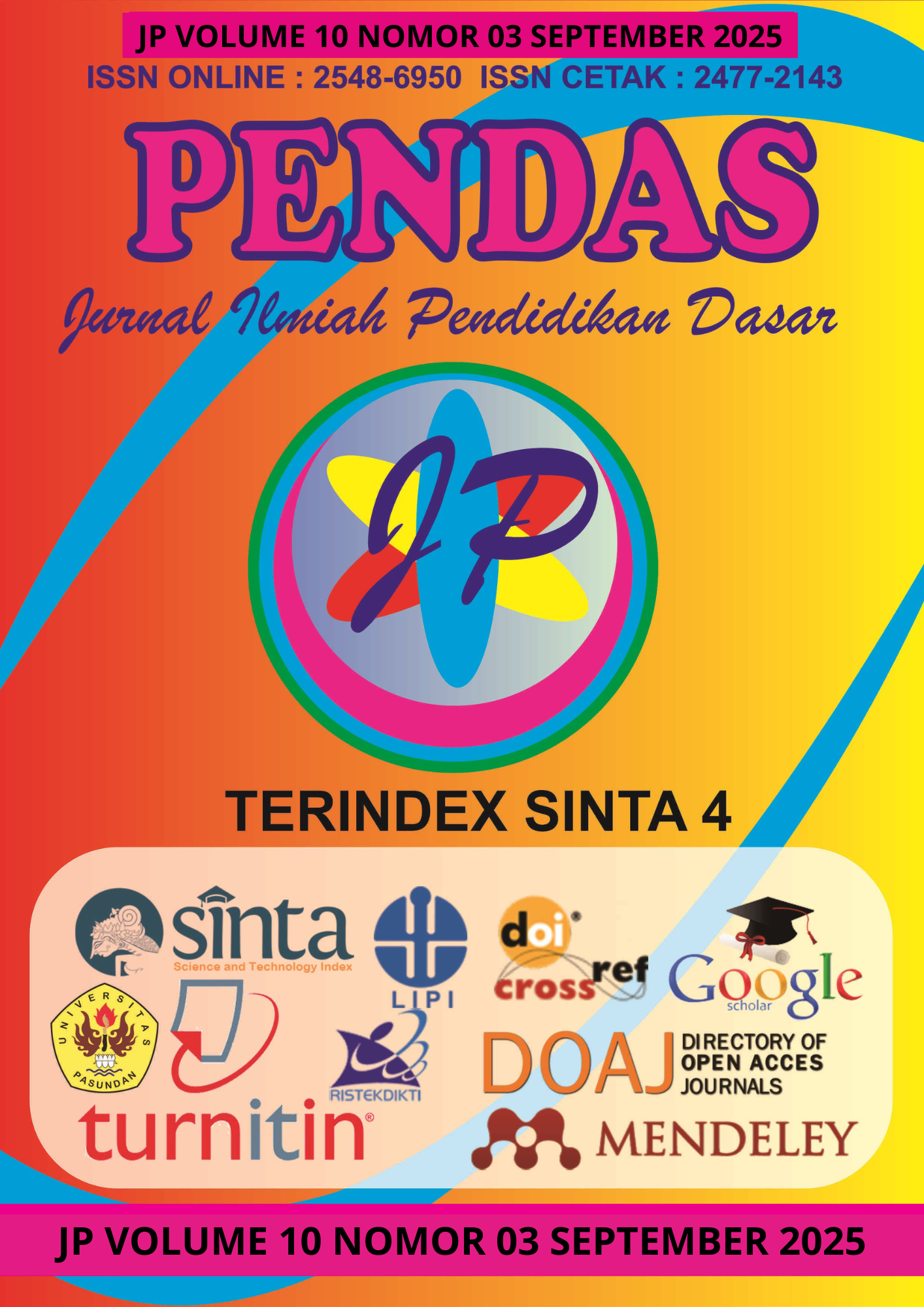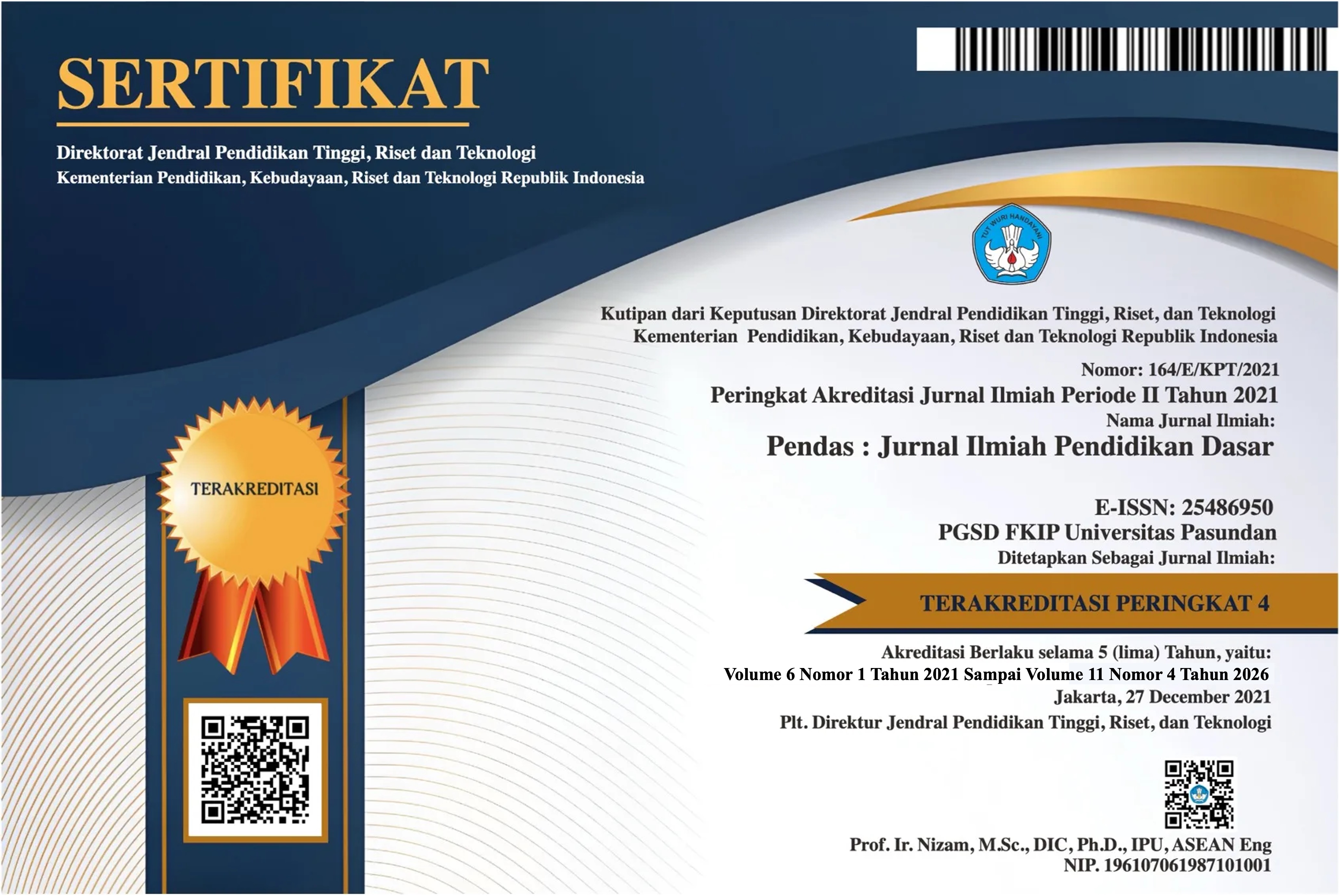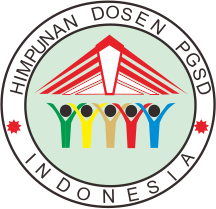PENGARUH MODEL PEMBELAJARAN GAMIFICATION TERHADAP HASIL BELAJAR IPAS SISWA KELAS V UPTD SD NEGERI 098166 PERUMNAS
DOI:
https://doi.org/10.23969/jp.v10i03.33963Keywords:
Influence, Gamification Model, Learning Outcomes of Light and Its PropertiesAbstract
This study aims to determine whether there is an influence of the Gamification Learning Model on the Science Learning Outcomes of Grade V Students in Learning Light and Its Properties at UPTD SD Negeri 098166 Perumnas. There are 2 hypotheses in this study, namely (1) Alternative hypothesis (Ha), there is a significant influence of the application of the Gamification Model on the Science Learning Outcomes of Grade V Students in Learning Light and Its Properties at UPTD SD Negeri 098166 Perumnas and (2) Null hypothesis (H0), there is no significant influence of the application of the Gamification Model on the Science Learning Outcomes of Grade V Students in Learning Light and Its Properties at UPTD SD Negeri 098166 Perumnas. This research is a quantitative study with a pre-experimental design using a "one group pretest-posttest design." The population of this study was all 28 fifth-grade students. Because the population size was less than 50, this population was used as the sample in this study. The data collection techniques used were tests (pretest and posttest) and documentation techniques while the data analysis used was the N-Gain Test and Hypothesis Test. Based on the results of the data analysis, it is known that the t-count result is 14.426 with a significance level of 0.05. So it can be concluded that there is an Effect of the Gamification Model on the Science Learning Outcomes of Grade V Students in Learning Light and Its Properties at the UPTD of SD Negeri 098166 Perumnas. This means that Ha is accepted and H0 is rejected.
Downloads
References
Arikunto, Suharsimi. 2014. Prosedur Penelitian Suatu Pendekatan Praktik. Jakarta: Rineka Cipta.
Arikunto (2017:110) Prosedur Penelitian: Suatu Pendekatan Praktik. Jakarta: Rineka Cipta.
Arikunto, Suharsimi (2019). Prosedur Penelitian Suatu Pendekatan Praktik. Jakarta: Rineka Cipta
Burke, B. (2014). Gamify: How Gamification Motivates People to Do Extraordinary Things. Brookline, MA: Bibliomotion.
Daryanto. (2010). Media Pembelajaran: Peranannya Sangat Penting Dalam Mencapai Tujuan Pembelajaran. Yogyakarta: Gava Media.
Deterding, S., Dixon, D., Khaled, R., & Nacke, L. (2011). From Game Design Elements to Gamefulness: Defining Gamification. Proceedings of the 15th International Academic MindTrek Conference, 9–15. ACM.
Hamalik, Oemar. (2011). Proses Belajar Mengajar. Jakarta: Bumi Aksara.
Hidayat, M., & Sari, R. P. (2021). “Efektivitas Pembelajaran Gamifikasi Menggunakan Classcraft dalam Meningkatkan Prestasi Belajar IPA Siswa SD.” Jurnal Teknologi Pendidikan Dasar, 5(2), 98–105.
Kapp, K. M. (2012). The Gamification of Learning and Instruction: Game-Based Methods and Strategies for Training and Education. San Francisco: Pfeiffer.
Kapp, K. M. (2014). Gamifikasi Pembelajaran: Strategi Mengubah Belajar Menjadi Menyenangkan. Jakarta: Erlangga.
Novitasari, D., & Yuliani, D. (2022). “Penerapan Gamifikasi dalam Meningkatkan Hasil Belajar IPAS Siswa Sekolah Dasar.” Jurnal Inovasi Pembelajaran Dasar, 7(2), 101–110.
Downloads
Published
Issue
Section
License
Copyright (c) 2025 Pendas : Jurnal Ilmiah Pendidikan Dasar

This work is licensed under a Creative Commons Attribution 4.0 International License.



















